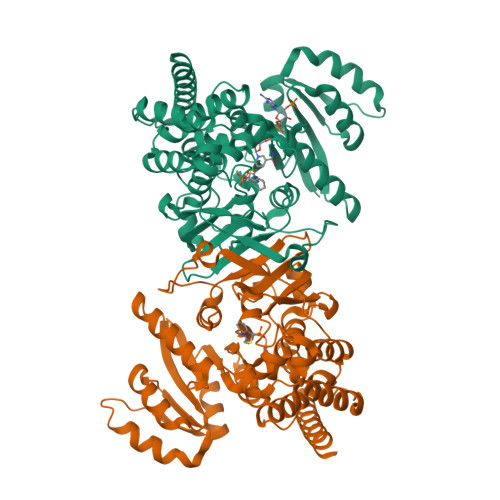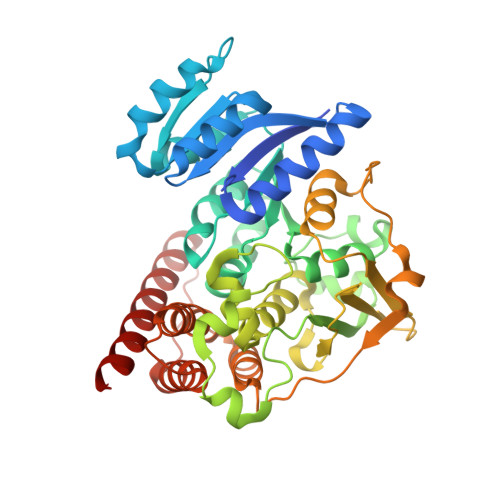IspC as Target for Antiinfective Drug Discovery: Synthesis, Enantiomeric Separation, and Structural Biology of Fosmidomycin Thia Isosters.
Kunfermann, A., Lienau, C., Illarionov, B., Held, J., Grawert, T., Behrendt, C.T., Werner, P., Hahn, S., Eisenreich, W., Riederer, U., Mordmuller, B., Bacher, A., Fischer, M., Groll, M., Kurz, T.(2013) J Med Chem 56: 8151-8162
- PubMed: 24032981
- DOI: https://doi.org/10.1021/jm4012559
- Primary Citation of Related Structures:
4KP7 - PubMed Abstract:
The emergence and spread of multidrug-resistant pathogens are widely believed to endanger human health. New drug targets and lead compounds exempt from cross-resistance with existing drugs are urgently needed. We report on the synthesis and properties of "reverse" thia analogs of fosmidomycin, which inhibit the first committed enzyme of a metabolic pathway that is essential for the causative agents of tuberculosis and malaria but is absent in the human host. Notably, IspC displays a high level of enantioselectivity for an α-substituted fosmidomycin derivative.
Organizational Affiliation:
Center for Integrated Protein Science Munich, Lehrstuhl für Biochemie, Technische Universität München , Lichtenbergstrasse 4, 85747 Garching, Germany.



















